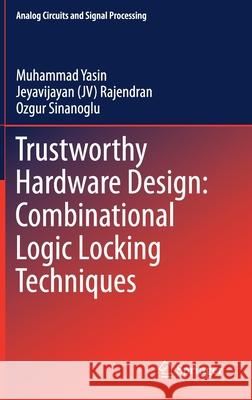Trustworthy Hardware Design: Combinational Logic Locking Techniques » książka
topmenu
Trustworthy Hardware Design: Combinational Logic Locking Techniques
ISBN-13: 9783030153335 / Angielski / Twarda / 2019 / 142 str.
Trustworthy Hardware Design: Combinational Logic Locking Techniques
ISBN-13: 9783030153335 / Angielski / Twarda / 2019 / 142 str.
cena 483,04
(netto: 460,04 VAT: 5%)
Najniższa cena z 30 dni: 462,63
(netto: 460,04 VAT: 5%)
Najniższa cena z 30 dni: 462,63
Termin realizacji zamówienia:
ok. 22 dni roboczych
Dostawa w 2026 r.
ok. 22 dni roboczych
Dostawa w 2026 r.
Darmowa dostawa!
Kategorie:
Kategorie BISAC:
Wydawca:
Springer
Seria wydawnicza:
Język:
Angielski
ISBN-13:
9783030153335
Rok wydania:
2019
Wydanie:
2020
Ilość stron:
142
Waga:
0.41 kg
Wymiary:
23.39 x 15.6 x 1.12
Oprawa:
Twarda
Wolumenów:
01
Dodatkowe informacje:
Wydanie ilustrowane











